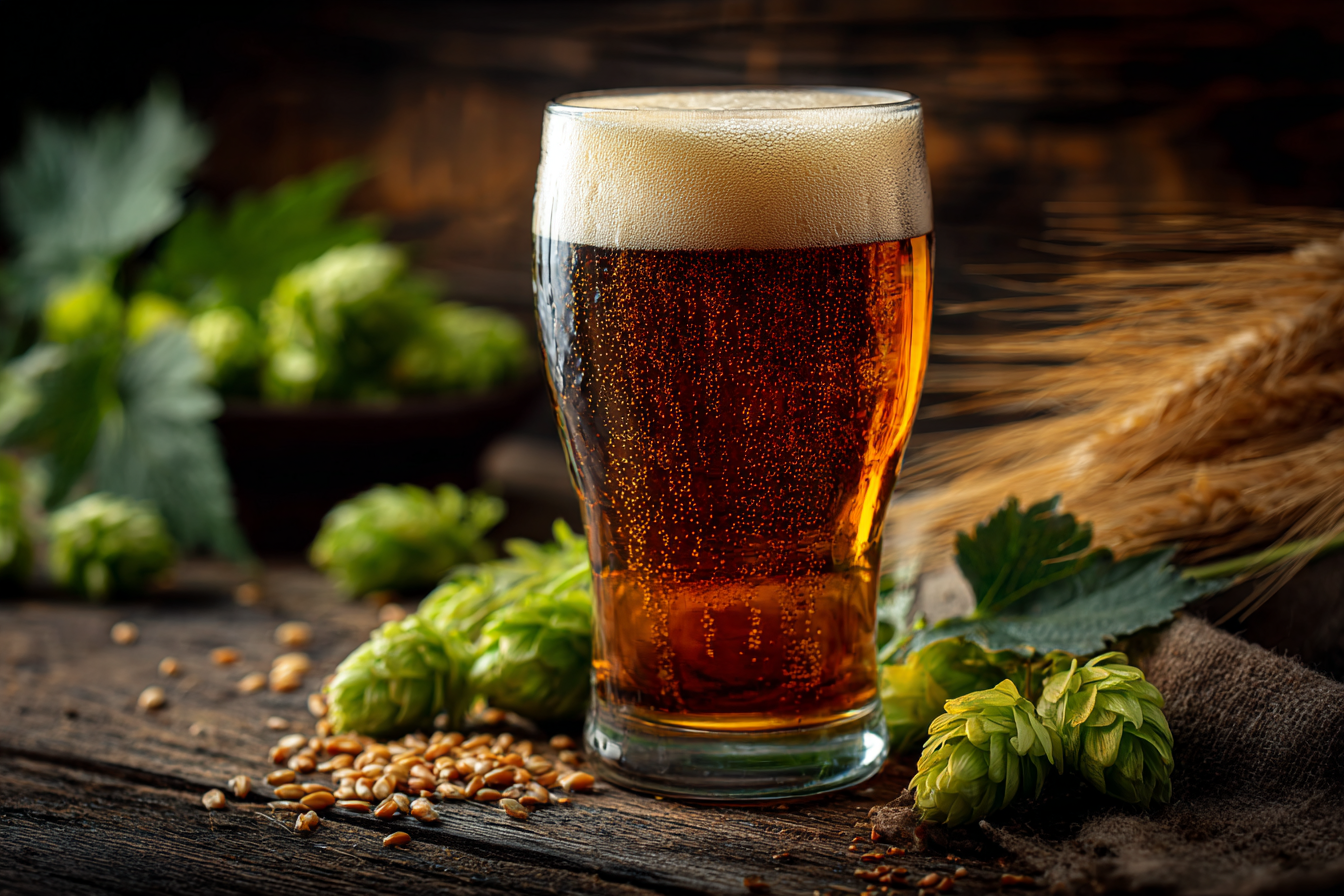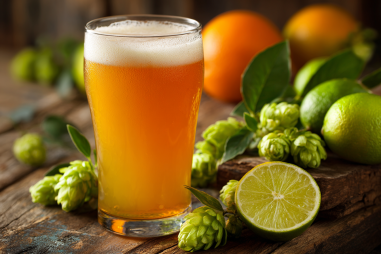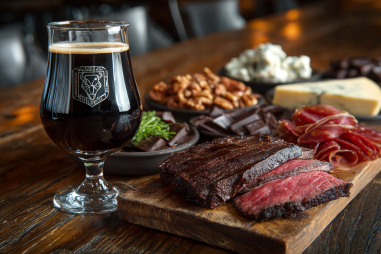Double IPAs, also known as Imperial IPAs, have carved out a distinct niche in the craft beer world thanks to their bold, intense flavor profiles. For those new to the style or even seasoned beer drinkers looking to deepen their appreciation, it’s important to understand what exactly sets Double IPAs apart. These beers are celebrated for their higher alcohol content, robust hop character, and complex malt support, all culminating in a multi-dimensional tasting experience. In this article, we’ll unpack the components that define the Double IPA flavor profile and explore why this style continues to captivate craft beer enthusiasts worldwide.
The Hop Character: Bitterness, Aroma, and Resin
The defining hallmark of a Double IPA is undoubtedly its hop character, which distinguishes it from other beer styles with a potent combination of bitterness, aroma, and resinous qualities. Double IPAs typically flaunt a strong hop bitterness, measured by International Bitterness Units (IBUs), often ranging from 60 up to 120 or more. This elevated bitterness provides a punchy, assertive backbone that commands attention but is carefully balanced to avoid overwhelming the palate.
Beyond bitterness, the aroma of Double IPAs plays an essential role in their flavor profile. Breweries frequently use large quantities of aromatic hops during dry hopping, imparting vibrant scents ranging from citrus and pine to tropical fruit and floral notes. Popular hop varieties like Citra, Amarillo, Centennial, and Simcoe contribute distinct aromas that can be fruity, resinous, or earthy. This aromatic richness creates an inviting olfactory experience even before the first sip.
Resinous qualities are another signature of Double IPAs. Resin, which comes from the lupulin glands in hop flowers, gives these beers a sticky, piney character that adds depth and complexity. This resin can evoke flavors akin to fresh pine needles or even a slight herbal bitterness, rounding out the hop experience nicely.
The Malt Backbone and Sweetness
While hops steal much of the spotlight, no Double IPA would be complete without a sturdy malt backbone to provide balance and complexity. The malt in a Double IPA is richer and more pronounced than in standard IPAs, delivering caramel, toffee, and biscuity sweetness that counteracts the sharp hop bitterness.
This malt sweetness is crucial because it helps create harmony within the beer, preventing the bitterness from becoming overpowering or one-dimensional. It lends body, mouthfeel, and sometimes an almost creamy texture that enriches the drinking experience. Brewers often use a blend of pale malt along with specialty malts like caramel or Munich malt to build this robust malt character.
The combined effect of malt sweetness and hop bitterness produces a complex interplay of flavors that can evolve as you savor the beer, showcasing the craftsmanship behind each brew.
Yeast Contribution to Flavor
Yeast often plays a subtle but important role in shaping the Double IPA flavor profile. While the yeast strains used in these beers tend to be clean-fermenting to highlight hop aromas, they can also contribute fruity esters or mild spice notes that add complexity.
American ale yeast strains, commonly employed in Double IPAs, usually produce minimal esters, allowing hops and malt to shine. However, some brewers experiment with different yeast strains that impart hints of citrus, tropical fruit, or even slight phenolic flavors like clove or pepper, enriching the beer’s overall character.
Additionally, yeast helps influence mouthfeel and perceived dryness. A well-attenuated yeast can result in a crisper finish, balancing the residual sweetness from the malts and complementing the beer’s bold hop profile.
Alcohol Warmth and Body
Double IPAs generally have elevated alcohol by volume (ABV), typically between 7.5% and 10% or even higher. This higher alcohol content imparts a noticeable warmth on the palate that adds another dimension to the flavor experience.
Alcohol not only contributes warmth but also enhances body and mouthfeel, sometimes bringing a subtle sweetness or boozy characteristic that complements the malt and hop flavors. Well-crafted Double IPAs integrate this higher alcohol content seamlessly, avoiding harshness or hot alcohol notes.
The full body typically associated with Double IPAs means the beer feels substantial when you drink it, supporting its complex flavor layers and contributing to its reputation as a beer style meant for savoring rather than quick consumption.
Tasting Notes and Common Flavor Descriptors
When exploring Double IPAs, here are some common tasting notes and flavor descriptors you might encounter:
- Citrus: Grapefruit, orange zest, lemon peel
- Tropical Fruit: Mango, pineapple, passionfruit, guava
- Piney/Resinous: Pine needles, fresh resin, herbal
- Floral: Jasmine, lavender, rose petals
- Caramel and Toffee: Sweet malt backbone balancing bitterness
- Biscuit or Bread: From specialty malts adding complexity
- Spicy or Earthy: Sometimes from yeast or hop varieties
- Alcohol Warmth: Gentle heat enhancing richness
This diverse range of flavors, combined with varying intensities, ensures that each Double IPA offers a unique tasting journey, dependent on the specific ingredients and brewing techniques used.
Pairing Double IPAs with Food
Given their bold flavors, Double IPAs pair wonderfully with a variety of foods that can stand up to — or complement — their intensity. Here are some pairing suggestions to enhance your overall experience:
- Spicy Dishes: Indian curries, spicy Mexican fare, or Thai cuisine benefit from the beer’s bitterness and carbonation, which help cleanse the palate.
- Rich, Fatty Foods: Burgers, fried chicken, and creamy cheeses are balanced nicely by the hoppy bitterness and malt sweetness.
- Grilled Meats: The charred flavors of grilled steak or pork enhance the resinous hop character.
- Sweet Desserts: Caramel or toffee-based desserts can be complemented by the malt backbone of the beer.
- Bitter Greens: Dishes including arugula or kale often pair well as bitterness in the beer matches the greens.
Ultimately, the key is finding dishes that harmonize with or contrast the beer’s flavor profile without being overshadowed.
Appreciating the Complexity of Double IPA
Understanding the flavor profile of Double IPAs enriches the drinking experience, revealing the artistry behind this dynamic style. The interplay of assertive hop bitterness, robust malt sweetness, subtle yeast nuances, and warming alcohol creates a multi-layered taste adventure that is both challenging and rewarding.
Whether you’re an avid craft beer lover or new to the world of IPAs, exploring the diverse expressions within the Double IPA category offers endless opportunities to discover flavors that excite the palate. So next time you pick up a Double IPA, take a moment to savor each sip, appreciating the intricate balance and bold creativity that make this style truly unique.







